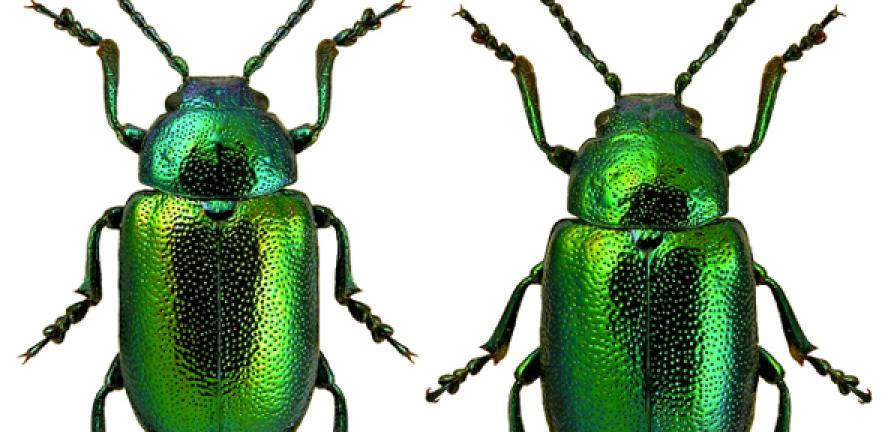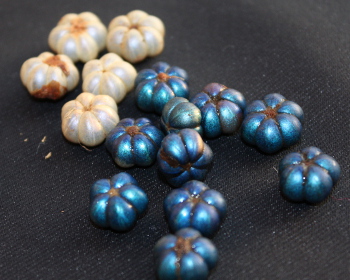
The special half-term event 'Can a Sustainable Future be Colourful?' takes place at the Science Museum from 19-21 February.
Researchers in Dr Silvia Vignolini’s Bio-inspired Photonics group study how living things use their internal structure to change their appearance. The most spectacular colours in nature are not necessarily made by pigmentation but by a phenomenon called light interference – where the complex structure of a living thing enhances some colours and dissipates others by the way it interacts with light.
The group’s exhibit in the Science Museum displays examples of the dazzling structural colours that can be found in beetles and other creatures. They also demonstrate how nature inspires the group to create their own colourful materials in the lab using simple biological building blocks.

As PhD student Tom Parton explains: "Structural colour is found in almost every kind of living thing – you may be familiar with examples like iridescent green dock beetles [Gastrophysa Viridula] or mother-of-pearl. This structural colour is also responsible for the most intense reflection found in nature, the fruit of the 'marble berry' [Pollia condensata]."
These natural colours are often built up from simple biological building blocks – like cellulose (which is found in plants like cotton and pine trees), chitin (found in fungi and crustaceans) and keratin (found in bird feathers and human hair).
One of the group’s goals is to make dyes and pigments using these materials, which are cheap, durable, non-toxic and biodegradable.

